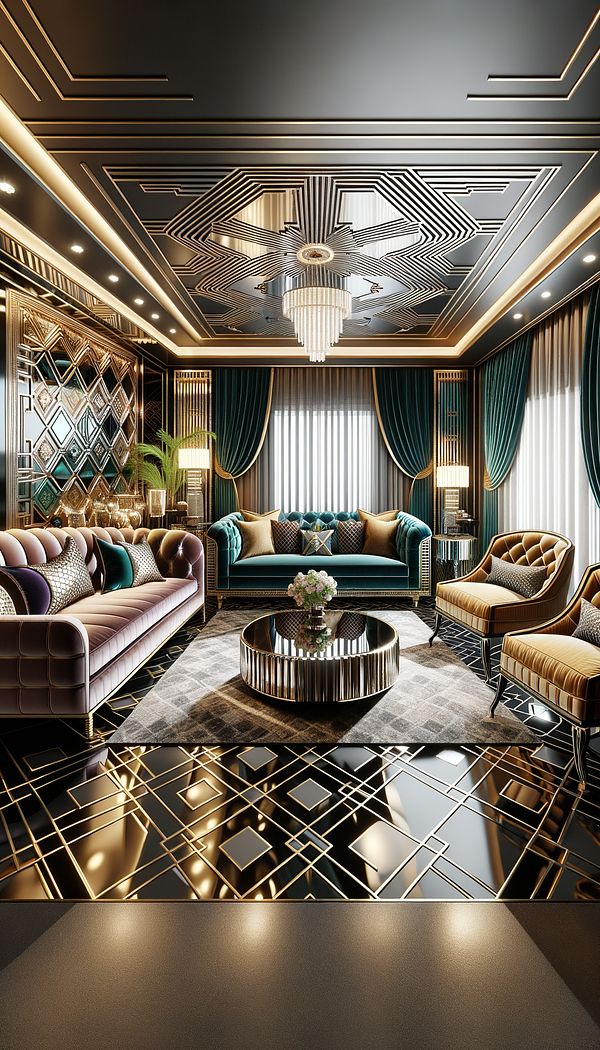What is an Art Deco?
Art Deco is a design style characterized by bold geometric shapes, rich colors, and lavish ornamentation.
Description
Art Deco, short for Arts Décoratifs, is a visual arts design style that first appeared in France just before World War I and gained international popularity throughout the 1920s and 1930s. This style is most commonly recognized for its geometric and angular forms, symmetrical designs, and the use of modern materials such as chrome, glass, and stainless steel. Additionally, Art Deco is noted for its luxurious and opulent details including inlaid wood, enameling, and handcrafted motifs inspired by nature, as well as motifs drawn from ancient civilizations such as Egypt and Mesopotamia.
While originally applied to architecture, the Art Deco style soon spread to other areas including interior design, fashion, and even everyday objects like radios and toasters. In interior design, Art Deco is celebrated for bringing a sleek, elegant aesthetic to spaces through furniture, lighting fixtures, and decorative objects. This style aims for a sophisticated atmosphere, often featuring rich contrasts, lavish materials, and an emphasis on craftsmanship and detailing.
Art Deco’s distinctive style has left a lasting impact on the design world, continuing to inspire contemporary designers who draw upon its timeless elegance. Despite its peak in the early 20th century, Art Deco remains a sought-after aesthetic for its bold, forward-thinking approach to design.
Usage
In interior design, Art Deco can be seen in the streamlined furniture, ornate decorative objects, and thematic elements such as sunburst patterns and stylized motifs. Public buildings, theaters, and homes built during the 1920s and 1930s often feature Art Deco architecture and interiors. Contemporary applications include luxury hotels, chic restaurants, and modern homes that seek to incorporate the elegance and glamour of the Art Deco period.
FAQs
-
What materials are commonly used in Art Deco design?
Chrome, glass, stainless steel, inlaid wood, and enameling are among the materials commonly used in Art Deco design, emphasizing luxury and craftsmanship.
-
How can I incorporate Art Deco elements into my home?
Incorporate Art Deco elements by using bold geometric patterns, angular furniture, metallic accents, and decorative objects with lavish detailing and vibrant colors.
-
Is Art Deco the same as Art Nouveau?
No, Art Deco and Art Nouveau are distinct styles. Art Nouveau is characterized by natural forms and flowing lines, while Art Deco features geometric shapes, symmetry, and a more modern aesthetic.
-
Can Art Deco be considered a sustainable design style?
While not inherently sustainable, Art Deco can be adapted to modern sustainability principles through the use of eco-friendly materials and practices in its implementation.
Practical Application
When aiming to incorporate Art Deco into your design, focus on symmetry, opulence, and a mix of both modern and traditional elements. Look for statement furniture pieces, geometric patterns in flooring and carpets, window treatments, or wall treatments and finishes, and complement these with metallic or glass accents. Whether you are designing a commercial space or a chic home interior, integrating Art Deco elements can add a sense of sophistication and timeless appeal.
-
Design Styles478 articles
-
Furniture Types599 articles
-
Lighting111 articles
-
Decorative Objects240 articles
-
Historical Periods & Movements150 articles
-
SymmetrySymmetry in interior design refers to a balanced distribution of visual weight on either side of a central axis.
-
Wall ClockA wall clock is a time-keeping device designed to be mounted on a wall.
-
Bonnet TopA decorative top piece on furniture that resembles the shape of a bonnet.
-
Bamboo TurningBamboo Turning is a technique used to shape bamboo into various forms and structures for interior design and furniture making.
-
Handkerchief TableA handkerchief table is a type of drop-leaf table where the leaves are supported by brackets that swing out, resembling a handkerchief partially unfolded.
